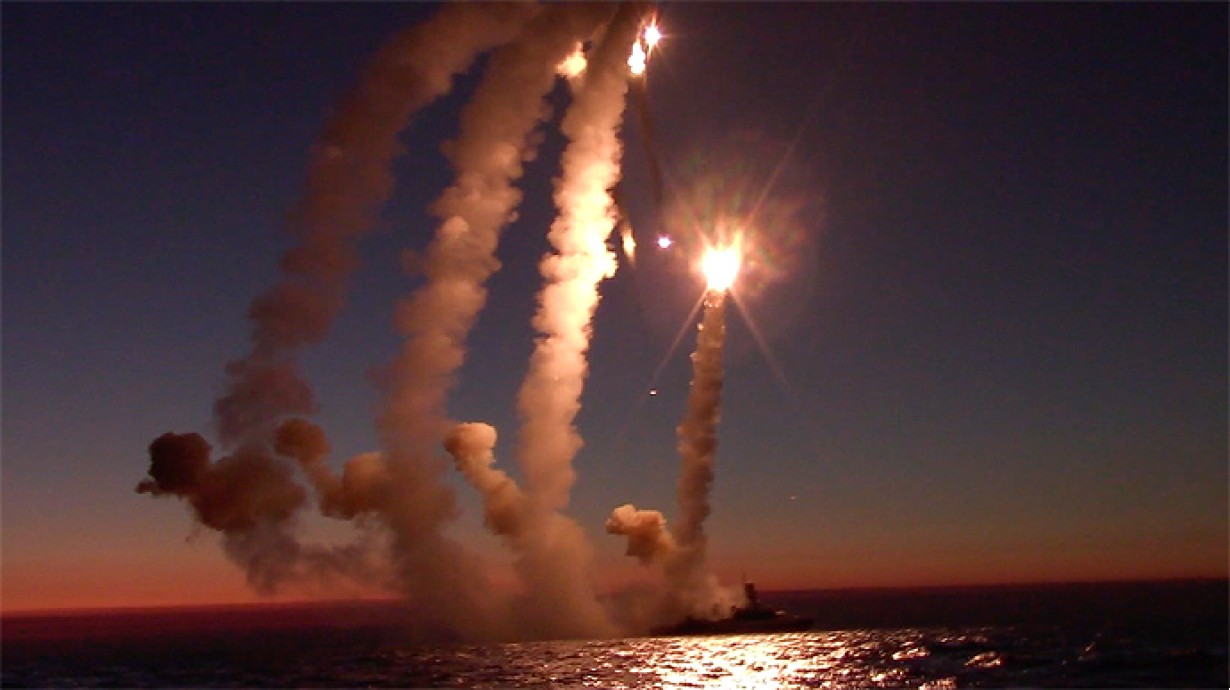After ravaging Ukraine with its Kalibr cruise missiles fired from the Black Sea, Russia has now demonstrated the firing of these advanced missiles in the Sea of Japan.
The Russian Defense Ministry announced on November 25 that the Pacific Fleet’s diesel-electric submarine Magadan launched Kalibr missiles at sea and coastal targets from a submerged position, Russian news agency RIA Novosti reported.
The strikes were launched on targets in the Sea of Japan.
According to reports, the submarine secretly entered the region before the combat training. The Defense Department said in a statement, “The first missile successfully hit a sea target imitating a surface ship of a mock enemy.
The second missile hit a coastal target at the tactical field Surkum in the Khabarovsk Territory. The firing range was more than a thousand kilometers.”
The entire exercise and missile firing was conducted by the Russian Pacific Fleet and included ships, drones, and aircraft of its Naval Aviation.
The long-range Kalibr missile has already demonstrated its prowess against Ukraine as it was credited with bulk attacks on Ukraine’s infrastructure in October.
An investigation conducted by Bellingcat had concluded that Kalibrs were part of the largest coordinated missile strike on Ukrainian targets by Russian forces in October. Kalibr is the cornerstone of Russia’s long-range attack capabilities.
According to the US Office of Naval Intelligence, a “high ranking Russia defense industry official” said of the Kalibr system in 2011: “Russia plans to deploy Kalibr capability on all new design construction nuclear and non-nuclear submarines, corvettes, frigates, and larger surface ships. Kalibr provides even modest platforms, such as corvettes, with significant offensive capability and, with the use of the land attack missile, all platforms have a significant ability to hold distant fixed ground targets at risk using conventional warheads.”
The submarine used to fire the Kalibr missile, the Magadan, is the third of six diesel-electric submarines developed for the Pacific Fleet under Project 636.3 (NATO reporting name: Improved Kilo).
The vessel was inducted into service in October 2021 in St. Petersburg. A year later, in October 2022, the submarine finally joined the Pacific Fleet by arriving through the Northern Sea Route.
The Magadan’s missile firing exercise comes as the team’s fourth submarine, the Ufa, joined the fleet. The fifth submarine, the Mozhaisk, will be launched by the spring of 2023, while the sixth submarine, “Yakutsk,” is under construction.
Even though the Russian Ministry of Defense did not specify the purpose of missile launches in the contested Sea of Japan, the move could send alarm bells ringing in Japan, which has already been inundated with North Korean missiles landing in the Sea of Japan.
Russia’s Emboldened Position In The Sea of Japan
Russia and Japan remain embroiled in perpetual tensions over the Kuril Islands territorial dispute. Japan has attempted multiple times to retake sovereignty of the disputed islands, which Moscow captured in the final days of WWII.
However, the disagreement prevented the two nations from formally ending their World War II hostilities by forging a peace treaty. The divide between the two countries has widened ever since Russia decided to invade Ukraine in February and Japan joined the West to impose sanctions on Moscow.

In retaliation, Russia stated earlier this year that it had suspended peace talks with Japan in reaction to Tokyo’s sanctions. In March, Russia conducted massive military drills on the disputed Kuril Islands with more than 3,000 troops and hundreds of army equipment.
In addition, the Russian invasion of Ukraine has presented a host of challenges for Japan. Moscow’s increased collaboration with Beijing in the Sea of Japan has left Tokyo feeling cornered in the region.
A flotilla of #Chinese naval #vessels carried out a live-fire military drill in the Sea of Japan on Friday afternoon as part of the ongoing Vostok (East)-2022 exercises. pic.twitter.com/94XWRKM7S8
— Zhang Meifang张美芳 (@CGMeifangZhang) September 6, 2022
In September this year, as part of the Vostok 2022 war games hosted by Russia, the two states collaborated to destroy a “hostile submarine” in the Sea of Japan. Later that month, the Japanese Ministry of Defense announced seven warships from China and Russia cruising between Japan’s Izu islands on September 26-27.
At least four Russian Navy ships went southwest and crossed the surrounding Japanese seas between the Izu islands of Mikurajima and Hachijojima, including a destroyer of the Udaloy class. This triggered a wave of concern in Tokyo as the Russian Navy had never visited these waters.
The growing hostilities in the region have triggered a tectonic shift in Japan’s military policy and strategic posture. Faced with threats from an aggressive Russia, an expanding China, and a hysterical North Korea, Japan is eyeing massive defense spending and the acquisition of long-range missiles.
Moscow’s increased military activity in the region will only fuel this fire.
- Contact the author at sakshi.tiwari9555 (at) gmail.com
- Follow EurAsian Times on Google News




